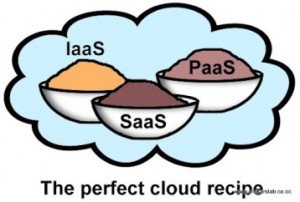 Platform as a service (PaaS) remains to be the core element of cloud computing in any personal or business solutions. Any changes, therefore, to its make up will definitely affect cloud vendors and users according to the research analyst Gartner.
Platform as a service (PaaS) remains to be the core element of cloud computing in any personal or business solutions. Any changes, therefore, to its make up will definitely affect cloud vendors and users according to the research analyst Gartner.
Vice president and Gartner analyst, Yefim Natis said, “With large and growing vendor investment in PaaS, the market is on the cusp of several years of strategic growth, leading to innovation and likely breakthroughs in technology and business use of all of cloud computing. Users and vendors of enterprise IT software solutions that are not yet engaged with PaaS must begin building expertise in PaaS or face tough challenges from competitors in the coming years.”
PaaS refers to a platform that is composed of layers of cloud technology framework that holds all application services needed by any business enterprise. They are also referred to as middleware because of the stack of layers of end-to-end software in the cloud. It is a cloud platform that integrates all applications needed by a business from operating systems, data storage, virtualization requirements and networks. The scope of PaaS’s comprehensive services include application development tools, functionality of application servers, database management, portal service products, middleware integration, business process tools and many others.
PaaS is still at its young stage according to Gartner and there are yet to be leaders in this arena in terms of business practices and standards. In the meantime, while all these are still being developed there may still be risks uncertainties from its use.
“However, PaaS products are likely to evolve into a major component of the overall cloud computing market, just as the middleware products including application servers, database management systems (DBMSs), integration middleware and portal platforms are the core foundation of the traditional software industry. The tension between the short-term risk and the long-term strategic imperative of PaaS will define the key developments in the PaaS market during the next two to three years,” Natis said.
New developments to PaaS are expected to be out towards the end of 2012 and 2013. By 2016, it is projected that new and upgraded PaaS offerings will be largely distributed by 2016. PaaS models will be made from new programming models, new PaaS market leaders and fresh business practices and standards. While all these are taking place consumers may have to deal with the unpredictable PaaS market.
“While there are clear risks associated with the use of services in the new and largely immature PaaS market, the risk of avoiding the PaaS market is equally high. The right strategy for most mainstream IT organizations and software vendors is to begin building familiarity with the new cloud computing opportunities by adopting some PaaS services now, albeit with the understanding of their limitations and with the expectation of ongoing change in the market offerings and use patterns,” Natis concluded.